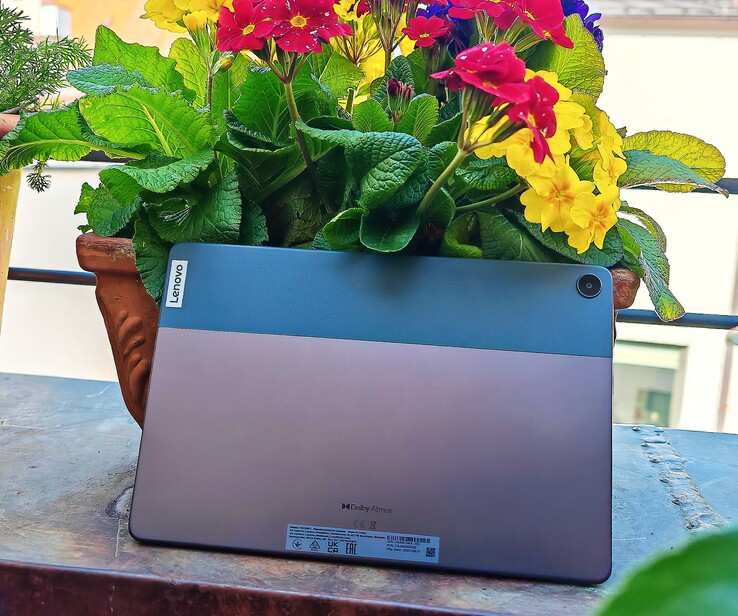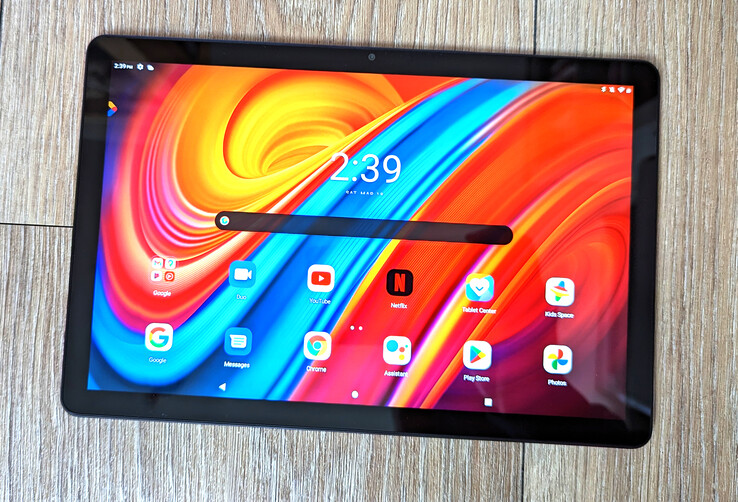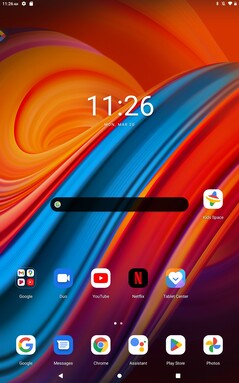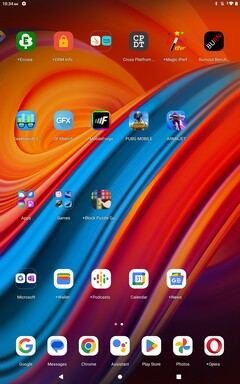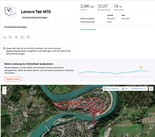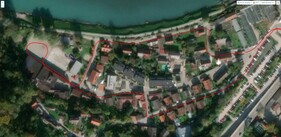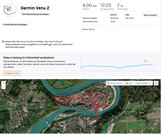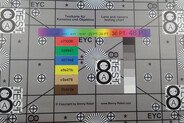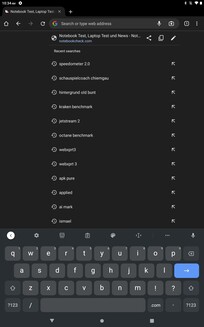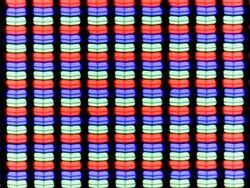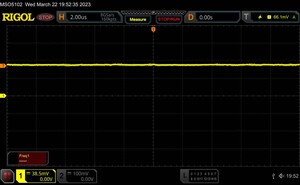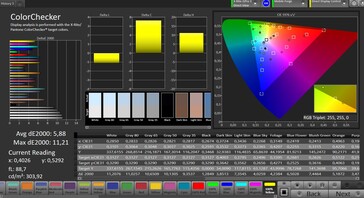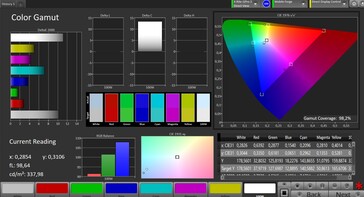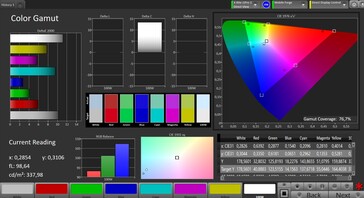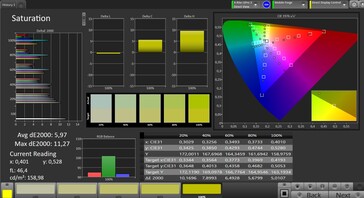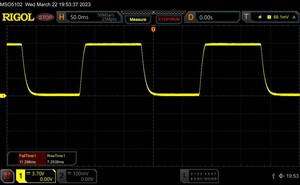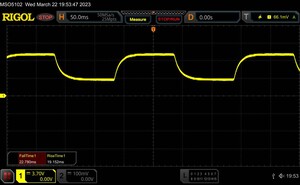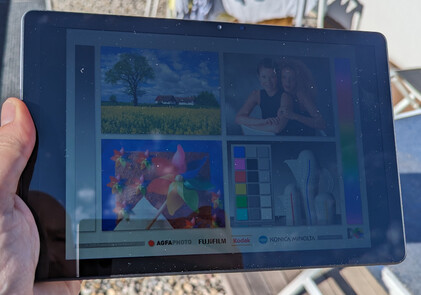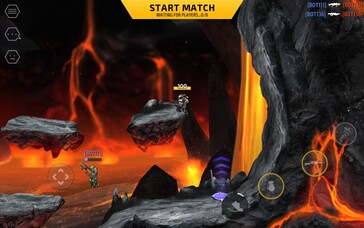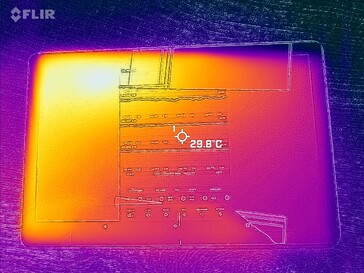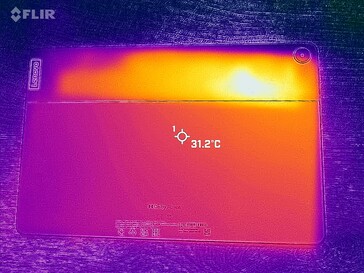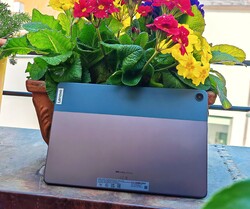Lenovo Tab M10 2022 (Gen 3) tablet review – lightweight budget device with metal chassis
Nowadays if you want a budget tablet, you'll often have to look at devices from lesser-known companies. However, a few large manufacturers continue to offer devices for those with a tight budget. One such example is Lenovo. The Tab M10 2022 is already the third generation of this affordable 10-inch tablet released by the Chinese company.
In this price bracket, consumers often have to accept some drawbacks, whether it's performance, battery capacity or screen quality. We put the Lenovo Tab M10 2022 through its paces to take a closer look at what could potentially bother consumers in everyday use and whether the tablet is enjoyable nonetheless.
Comparison with possible compeitiors
Rating | Date | Model | Weight | Height | Size | Resolution | Price |
|---|---|---|---|---|---|---|---|
| 80 % v7 (old) | 03 / 2023 | Lenovo Tab M10 Gen 3 T610, Mali-G52 MP2 | 460 g | 8.5 mm | 10.10" | 1920x1200 | |
| 82.5 % v7 (old) | 07 / 2022 | Lenovo Tab M10 Plus Gen 3 Helio G80, Mali-G52 MP2 | 465 g | 7.45 mm | 10.61" | 2000x1200 | |
| 82.2 % v7 (old) | 02 / 2023 | Nokia T10 T7200 (T606), Mali-G57 MP1 | 375 g | 9 mm | 8.00" | 1280x800 | |
| 82.2 % v7 (old) | 03 / 2023 | Lenovo Tab M9 Helio G80, Mali-G52 MP2 | 344 g | 8 mm | 9.00" | 1340x800 | |
| 81 % v7 (old) | 02 / 2022 | Samsung Galaxy Tab A8 2022 T618, Mali-G52 MP2 | 508 g | 6.9 mm | 10.50" | 1920x1200 |
Case – Beautiful metal chassis
The chassis is definitely one delightful aspect of this device. At 460 g (1.0 lb), the Lenovo Tab M10 2022 is not too heavy for a 10-inch tablet. Even though the bezel is very conspicuous, it helps to prevent users from touching the display unintentionally. Lenovo could certainly have made the bezel slightly thinner, but the third-gen Tab M10 still looks rather modern anyway.
In keeping with Lenovo's current design language, the back of the chassis is divided into two parts. The lower section is made of metal, whereas the upper, narrower section is covered in plastic to facilitate the antenna's ability to receive and transmit data.
The matt metal and lightly textured plastic create a stylish contrast. The tablet has exceptional fit and finish and sits well in the hand. Unfortunately, there are no other colour options available, at least in Europe.
Specifications – LTE versions available
The Lenovo Tab M10 comes in Wi-Fi-only and LTE variants as well as two storage options. Our review unit is a Wi-Fi-only model with 64 GB of storage. Lenovo offers the following configurations:
- Lenovo Tab M10 2022 Wi-Fi 3 GB RAM / 32 GB storage
- Lenovo Tab M10 2022 LTE 3 GB RAM / 32 GB storage
- Lenovo Tab M10 2022 Wi-Fi 4 GB RAM / 64 GB storage
- Lenovo Tab M10 2022 LTE 4 GB RAM / 64 GB storage
All variants should cost in the ballpark of €200 (US$215) based on the official pricing provided by Lenovo. That said, you can meanwhile get most of the variants cheaper on the Internet.
The tablet uses a USB-C port for data transfer and charging. However, it only operates at USB 2.0 speeds due to the way it is connected internally.
microSD card reader
The microSD reader can also support cards with higher capacity and delivers moderate read and write speeds.
We tested it out using our reference microSD card, the Angelbird V60. In the benchmarks, the Tab M10 is ranked right in the middle of our comparison group. This means there are tablets in this price range that can read and write to SD cards much faster than the Tab M10.
| SD Card Reader - average JPG Copy Test (av. of 3 runs) | |
| Samsung Galaxy Tab A8 2022 (Angelbird AV Pro V60) | |
| Nokia T10 (Angelbird V60) | |
| Lenovo Tab M10 Gen 3 (Angelbird V60) | |
| Lenovo Tab M9 (Angelbird V60) | |
| Lenovo Tab M10 Plus Gen 3 (Angelbird AV Pro V60) | |
Cross Platform Disk Test (CPDT)
Software – Old and bloated
Lenovo deserves to be criticised for the software situation. The Tab M10 ships with the dated Android 11. According to Lenovo, there should already be an update to the slightly newer Android 12. But we weren't able to find it using our review unit.
Lenovo promises to support the tablet with security updates until the end of February 2025 – but they will be released at most once every six months. This is evident on our review unit, whose patches were dated September 2022 at the time of writing this review.
Then there is also the issue of preinstalled software. For many years, Lenovo was pretty restrained and exemplary when it comes to bloatware. But this time around, the Tab M10 ships with numerous mobile games as well as quite a few third-party apps. On the one hand, this is annoying because the amount of storage is fairly modest for a device in this price range. On the other hand, you'll keep getting notifications pestering you to give this or that game a try.
Needless to say, unwanted apps can mostly be uninstalled without much effort. But this still leaves a bad taste in the user's mouth given Lenovo's past practice of providing largely stock Android.
Connectivity and GNSS – Fast and stable
Wi-Fi 5 is the fastest Wi-Fi standard supported by our review unit. However, this isn't a huge issue for the Lenovo Tab M10 (Gen 3). The tablet delivered fast and stable data transfer rates during our Wi-Fi test, which is carried out using our reference router, the Asus ROG Rapture AXE11000.
Signal strength is decent on the tablet. Wi-Fi signal was at full strength when the tablet was close to the router. And we still had about 50% signal strength even with 10 metres and 3 walls separating the two devices. That said, websites did load noticeably slower when the Tab M10 was farther away from the router.
As previously mentioned, the Lenovo Tab M10 2022 is also available with an LTE module.
| Networking | |
| iperf3 receive AXE11000 | |
| Lenovo Tab M10 Plus Gen 3 | |
| Lenovo Tab M9 | |
| Samsung Galaxy Tab A8 2022 | |
| Lenovo Tab M10 Gen 3 | |
| Nokia T10 | |
| iperf3 transmit AXE11000 | |
| Lenovo Tab M9 | |
| Nokia T10 | |
| Lenovo Tab M10 Gen 3 | |
| Samsung Galaxy Tab A8 2022 | |
| Lenovo Tab M10 Plus Gen 3 | |
Regardless of which Lenovo Tab M10 (Gen 3) you purchase, a GPS module is always on board. However, it took a while to locate us outdoors and was only accurate to within 8 metres. On a cloudy, the device wasn't able to detect as many satellites.
For our field test, we took the Tab M10 with us on a bike ride along with a Garmin Venu 2 for comparison. The M10 performed rather well: sure, the device produced some minor deviations and showed us supposedly riding through front gardens and houses, but the M10 is completely usable if you don't need the navigation to be extremely exact.
Cameras – Typical tablet quality
An 8MP rear camera should be enough for the M10. Tablets are by and large not used for high-quality photography anyway. The main shooter takes presentable photos for a device in this price range, but you shouldn't expect sharp, detailed images from it. There is a moderate amount of brightening in dark areas as well as visible artefacts upon closer inspection. But the camera is adequate considering that it is likely going to be used mainly for taking snapshots and scanning QR codes.
The rear camera can capture videos at up to Full HD and 30 fps. Its autofocus is often slightly sluggish, and the camera sometimes takes a while to adapt to the lighting situation. There are practically no adjustment options for the camera.
The Tab M10 has a 5MP front camera. Selfies taken with this camera are best left unscrutinised, and lighting should also be good. But otherwise, the tablet takes serviceable photos.
Image comparison
Choose a scene and navigate within the first image. One click changes the position on touchscreens. One click on the zoomed-in image opens the original in a new window. The first image shows the scaled photograph of the test device.
Main camera: PlantMain camera: EnvironmentMain camera: Low light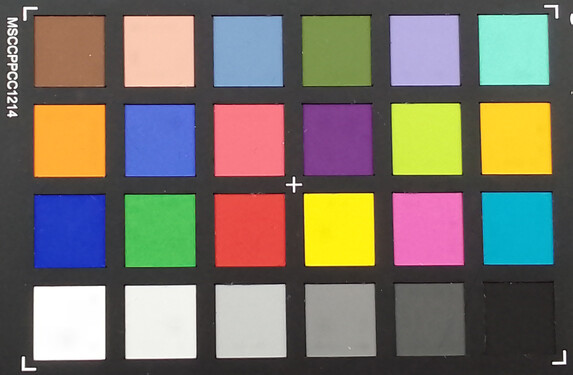

Accessories and warranty – Folio cover available
In the box, you'll find a 10-watt charger, a USB cable and a tool for opening the microSD and SIM slot. On the company's website, Lenovo also offers the tablet in a bundle with a folio cover, which you can buy separately for about €18 (US$19.5).
Lenovo offers a 24-month warranty on tablets purchased within the EU. Warranty terms and conditions may vary by region.
Input devices and operation – No fingerprint sensor
Because the Tab M10 is only equipped with a 60Hz panel, you'll have to settle for a user experience that is not entirely smooth. However, apart from some occasional stutters, the Lenovo Tab M10 makes a good impression in terms of usability – the touchscreen is able to detect inputs fairly quickly and reliably.
The tablet doesn't have a fingerprint sensor, but you can use face recognition for authentication purposes. This feature is fast and pretty reliable, but the technology on board isn't very secure against manipulation because it lacks additional specialised hardware.
Display – Could be brighter
The 10.1-inch tablet has a proper WUXGA display (slightly taller than Full HD), meaning even finer details are readable and not too pixelated. You can enjoy content from streaming services in all its glory on the screen because the Tab M10 has Widevine certification.
However, the IPS screen struggles to get brighter than 330 cd/m², which could be problematic especially if you intend to use the device outdoors or in a very bright room. The display has nonetheless decent black level (0.31 cd/m²). As a result, it has a satisfactory contrast ratio, and colours appear slightly more vibrant.
| |||||||||||||||||||||||||
Brightness Distribution: 94 %
Center on Battery: 343 cd/m²
Contrast: 1106:1 (Black: 0.31 cd/m²)
ΔE ColorChecker Calman: 5.9 | ∀{0.5-29.43 Ø4.78}
ΔE Greyscale Calman: 7.9 | ∀{0.09-98 Ø5}
98.2% sRGB (Calman 2D)
Gamma: 2.184
CCT: 9198 K
| Lenovo Tab M10 Gen 3 IPS, 1920x1200, 10.1" | Lenovo Tab M10 Plus Gen 3 IPS LCD, 2000x1200, 10.6" | Nokia T10 IPS, 1280x800, 8" | Lenovo Tab M9 IPS, 1340x800, 9" | Samsung Galaxy Tab A8 2022 TFT-LCD, 1920x1200, 10.5" | |
|---|---|---|---|---|---|
| Screen | 29% | -4% | 32% | -19% | |
| Brightness middle (cd/m²) | 343 | 510 49% | 446 30% | 405 18% | 368 7% |
| Brightness (cd/m²) | 332 | 480 45% | 429 29% | 368 11% | 346 4% |
| Brightness Distribution (%) | 94 | 85 -10% | 94 0% | 83 -12% | 91 -3% |
| Black Level * (cd/m²) | 0.31 | 0.49 -58% | 0.65 -110% | 0.17 45% | 0.61 -97% |
| Contrast (:1) | 1106 | 1041 -6% | 686 -38% | 2382 115% | 603 -45% |
| Colorchecker dE 2000 * | 5.9 | 1.8 69% | 4.87 17% | 5.15 13% | 6.9 -17% |
| Colorchecker dE 2000 max. * | 11.2 | 3.7 67% | 9.85 12% | 10.12 10% | 11.4 -2% |
| Greyscale dE 2000 * | 7.9 | 2.2 72% | 5.7 28% | 3.7 53% | 7.7 3% |
| Gamma | 2.184 101% | 2.17 101% | 2.189 101% | 2.287 96% | 2.16 102% |
| CCT | 9198 71% | 6907 94% | 7781 84% | 7379 88% | 8547 76% |
* ... smaller is better
Screen Flickering / PWM (Pulse-Width Modulation)
| Screen flickering / PWM not detected | |||
In comparison: 53 % of all tested devices do not use PWM to dim the display. If PWM was detected, an average of 8101 (minimum: 5 - maximum: 343500) Hz was measured. | |||
We didn't detect any PWM on the display. But we did find a rather severe blue tint when analysing the panel using a spectrophotometer and the CalMAN software. Warm shades, in particular, also deviate a lot from their respective reference colours.
Display Response Times
| ↔ Response Time Black to White | ||
|---|---|---|
| 18.4 ms ... rise ↗ and fall ↘ combined | ↗ 11.2 ms rise | |
| ↘ 7.2 ms fall | ||
| The screen shows good response rates in our tests, but may be too slow for competitive gamers. In comparison, all tested devices range from 0.1 (minimum) to 240 (maximum) ms. » 40 % of all devices are better. This means that the measured response time is similar to the average of all tested devices (20.2 ms). | ||
| ↔ Response Time 50% Grey to 80% Grey | ||
| 42 ms ... rise ↗ and fall ↘ combined | ↗ 22.8 ms rise | |
| ↘ 19.2 ms fall | ||
| The screen shows slow response rates in our tests and will be unsatisfactory for gamers. In comparison, all tested devices range from 0.165 (minimum) to 636 (maximum) ms. » 66 % of all devices are better. This means that the measured response time is worse than the average of all tested devices (31.6 ms). | ||
Where possible, you should avoid using the Lenovo Tab M10 2022 outdoors for prolonged periods because the display is out of its element in bright environments. The highly reflective surface and low brightness make content on the screen very difficult to read in this kind of situation.
The viewing angle is typical of an IPS display: images look quite even with minor brightness loss when the displayed is viewed from the side.
Performance – Moderately powerful
The Unisoc T610 is used in entry-level tablets and phones and overall offers great performance for this segment. In the Tab M10, the processor managed to outperform most of the competitors, but the differentials are minute. This means you shouldn't notice much performance difference in everyday use.
The tablet does indeed feel smooth to use for the most part, but even slightly more demanding apps can cause significant stutters and some apps from the Play Store outright refuse to be installed on the device.
| Geekbench 6.0 | |
| Single-Core | |
| Lenovo Tab M10 Gen 3 | |
| Average UNISOC T610 (n=1) | |
| Multi-Core | |
| Lenovo Tab M10 Gen 3 | |
| Average UNISOC T610 (n=1) | |
| CrossMark - Overall | |
| Average of class Tablet (227 - 2155, n=54, last 2 years) | |
| Samsung Galaxy Tab A8 2022 | |
| Lenovo Tab M10 Gen 3 | |
| Average UNISOC T610 (n=1) | |
| Lenovo Tab M9 | |
| AImark - Score v3.x | |
| Average of class Tablet (138 - 55794, n=52, last 2 years) | |
| Lenovo Tab M9 | |
| Lenovo Tab M10 Gen 3 | |
| Average UNISOC T610 (n=1) | |
| UL Procyon AI Inference for Android - Overall Score NNAPI | |
| Average of class Tablet (2597 - 76852, n=62, last 2 years) | |
| Lenovo Tab M9 | |
| Lenovo Tab M10 Gen 3 | |
| Average UNISOC T610 (1535 - 1662, n=2) | |
Although the ARM Mali G52 MP2 offers enough graphics performance for an entry-level tablet, the GPU struggles to showcase it in the Lenovo Tab M10 2022. As a result, the tablet consistently trails a little behind other devices in our comparison.
GFXBench (DX / GLBenchmark) 2.7: T-Rex Onscreen | 1920x1080 T-Rex Offscreen
GFXBench 3.0: on screen Manhattan Onscreen OGL | 1920x1080 1080p Manhattan Offscreen
GFXBench 3.1: on screen Manhattan ES 3.1 Onscreen | 1920x1080 Manhattan ES 3.1 Offscreen
GFXBench: on screen Car Chase Onscreen | 1920x1080 Car Chase Offscreen | on screen Aztec Ruins High Tier Onscreen | 2560x1440 Aztec Ruins High Tier Offscreen | on screen Aztec Ruins Normal Tier Onscreen | 1920x1080 Aztec Ruins Normal Tier Offscreen | 3840x2160 4K Aztec Ruins High Tier Offscreen
| 3DMark / Wild Life Extreme Unlimited | |
| Lenovo Tab M9 | |
| Samsung Galaxy Tab A8 2022 | |
| Lenovo Tab M10 Plus Gen 3 | |
| Lenovo Tab M10 Gen 3 | |
| Nokia T10 | |
| 3DMark / Wild Life Extreme | |
| Samsung Galaxy Tab A8 2022 | |
| Lenovo Tab M9 | |
| Lenovo Tab M10 Plus Gen 3 | |
| Lenovo Tab M10 Gen 3 | |
| Nokia T10 | |
| 3DMark / Wild Life Unlimited Score | |
| Samsung Galaxy Tab A8 2022 | |
| Lenovo Tab M9 | |
| Lenovo Tab M10 Plus Gen 3 | |
| Lenovo Tab M10 Gen 3 | |
| Nokia T10 | |
| 3DMark / Wild Life Score | |
| Samsung Galaxy Tab A8 2022 | |
| Lenovo Tab M9 | |
| Lenovo Tab M10 Plus Gen 3 | |
| Lenovo Tab M10 Gen 3 | |
| Nokia T10 | |
| 3DMark / Sling Shot Extreme (ES 3.1) Unlimited | |
| Samsung Galaxy Tab A8 2022 | |
| Lenovo Tab M10 Plus Gen 3 | |
| Lenovo Tab M10 Gen 3 | |
| Nokia T10 | |
| 3DMark / Sling Shot Extreme (ES 3.1) Unlimited Graphics | |
| Lenovo Tab M10 Plus Gen 3 | |
| Samsung Galaxy Tab A8 2022 | |
| Lenovo Tab M10 Gen 3 | |
| Nokia T10 | |
| 3DMark / Sling Shot Extreme (ES 3.1) Unlimited Physics | |
| Samsung Galaxy Tab A8 2022 | |
| Lenovo Tab M10 Gen 3 | |
| Nokia T10 | |
| Lenovo Tab M10 Plus Gen 3 | |
| GFXBench (DX / GLBenchmark) 2.7 / T-Rex Onscreen | |
| Lenovo Tab M9 | |
| Samsung Galaxy Tab A8 2022 | |
| Lenovo Tab M10 Plus Gen 3 | |
| Lenovo Tab M10 Gen 3 | |
| GFXBench (DX / GLBenchmark) 2.7 / T-Rex Offscreen | |
| Lenovo Tab M10 Plus Gen 3 | |
| Samsung Galaxy Tab A8 2022 | |
| Lenovo Tab M9 | |
| Lenovo Tab M10 Gen 3 | |
| GFXBench 3.0 / Manhattan Onscreen OGL | |
| Lenovo Tab M9 | |
| Samsung Galaxy Tab A8 2022 | |
| Lenovo Tab M10 Plus Gen 3 | |
| Lenovo Tab M10 Gen 3 | |
| GFXBench 3.0 / 1080p Manhattan Offscreen | |
| Samsung Galaxy Tab A8 2022 | |
| Lenovo Tab M10 Plus Gen 3 | |
| Lenovo Tab M9 | |
| Lenovo Tab M10 Gen 3 | |
| GFXBench 3.1 / Manhattan ES 3.1 Onscreen | |
| Lenovo Tab M9 | |
| Samsung Galaxy Tab A8 2022 | |
| Lenovo Tab M10 Plus Gen 3 | |
| Lenovo Tab M10 Gen 3 | |
| GFXBench 3.1 / Manhattan ES 3.1 Offscreen | |
| Samsung Galaxy Tab A8 2022 | |
| Lenovo Tab M10 Plus Gen 3 | |
| Lenovo Tab M9 | |
| Lenovo Tab M10 Gen 3 | |
| GFXBench / Car Chase Onscreen | |
| Lenovo Tab M9 | |
| Samsung Galaxy Tab A8 2022 | |
| Lenovo Tab M10 Plus Gen 3 | |
| Lenovo Tab M10 Gen 3 | |
| GFXBench / Car Chase Offscreen | |
| Samsung Galaxy Tab A8 2022 | |
| Lenovo Tab M10 Plus Gen 3 | |
| Lenovo Tab M9 | |
| Lenovo Tab M10 Gen 3 | |
| GFXBench / Aztec Ruins High Tier Onscreen | |
| Lenovo Tab M9 | |
| Nokia T10 | |
| Samsung Galaxy Tab A8 2022 | |
| Lenovo Tab M10 Plus Gen 3 | |
| Lenovo Tab M10 Gen 3 | |
| GFXBench / Aztec Ruins High Tier Offscreen | |
| Samsung Galaxy Tab A8 2022 | |
| Lenovo Tab M10 Plus Gen 3 | |
| Lenovo Tab M9 | |
| Lenovo Tab M10 Gen 3 | |
| Nokia T10 | |
| GFXBench / Aztec Ruins Normal Tier Onscreen | |
| Lenovo Tab M9 | |
| Nokia T10 | |
| Samsung Galaxy Tab A8 2022 | |
| Lenovo Tab M10 Plus Gen 3 | |
| Lenovo Tab M10 Gen 3 | |
| GFXBench / Aztec Ruins Normal Tier Offscreen | |
| Samsung Galaxy Tab A8 2022 | |
| Lenovo Tab M10 Plus Gen 3 | |
| Lenovo Tab M9 | |
| Lenovo Tab M10 Gen 3 | |
| Nokia T10 | |
| GFXBench / 4K Aztec Ruins High Tier Offscreen | |
| Lenovo Tab M10 Plus Gen 3 | |
| Lenovo Tab M9 | |
| Lenovo Tab M10 Gen 3 | |
| Nokia T10 | |
When browsing the Internet, you likewise shouldn't expect websites and images to load instantly on the Tab M10 Gen 3. All things considered, the tablet does a decent job for its price and can be used for frequent web browsing with a bit of patience.
| Jetstream 2 - 2.0 Total Score | |
| Average of class Tablet (22.3 - 395, n=68, last 2 years) | |
| Lenovo Tab M10 Gen 3 (Chrome 111) | |
| Average UNISOC T610 (41.5 - 46.9, n=2) | |
| Samsung Galaxy Tab A8 2022 (Chrome 94.0.4606.85) | |
| Lenovo Tab M9 (Chrome 110) | |
| Lenovo Tab M10 Plus Gen 3 (Chrome 102) | |
| WebXPRT 4 - Overall | |
| Average of class Tablet (26 - 376, n=71, last 2 years) | |
| Lenovo Tab M10 Gen 3 (Chrome 111) | |
| Average UNISOC T610 (n=1) | |
| Lenovo Tab M9 (Chrome 110) | |
| Speedometer 2.0 - Result 2.0 | |
| Average of class Tablet (2.59 - 790, n=55, last 2 years) | |
| Lenovo Tab M10 Gen 3 (Chome 111) | |
| Average UNISOC T610 (32.4 - 34.4, n=2) | |
| Samsung Galaxy Tab A8 2022 (Chrome 94.0.4606.85) | |
| Lenovo Tab M9 (Chome 110) | |
| Lenovo Tab M10 Plus Gen 3 (Chrome 102) | |
| Octane V2 - Total Score | |
| Average of class Tablet (763 - 138481, n=95, last 2 years) | |
| Lenovo Tab M10 Plus Gen 3 (Chrome 102) | |
| Lenovo Tab M9 (Chrome 110) | |
| Lenovo Tab M10 Gen 3 (Chrome 111) | |
| Average UNISOC T610 (n=1) | |
| Samsung Galaxy Tab A8 2022 (Chrome 94.0.4606.85) | |
| Nokia T10 (Chrome 109) | |
| Mozilla Kraken 1.1 - Total | |
| Lenovo Tab M9 (Chrome 110) | |
| Lenovo Tab M10 Plus Gen 3 (Chrome 102) | |
| Lenovo Tab M10 Gen 3 (Chrome 111) | |
| Average UNISOC T610 (n=1) | |
| Samsung Galaxy Tab A8 2022 (Chrome 94.0.4606.85) | |
| Average of class Tablet (243 - 27101, n=80, last 2 years) | |
* ... smaller is better
The Tab M10 is equipped with eMMC flash, which is the slowest storage technology used in smartphones and tablets at the moment. The tablet's performance is therefore expectedly low in this department.
That said, only a handful of other tablets in this price bracket can read and write data faster than the M10.
| Lenovo Tab M10 Gen 3 | Lenovo Tab M10 Plus Gen 3 | Nokia T10 | Lenovo Tab M9 | Samsung Galaxy Tab A8 2022 | Average 64 GB eMMC Flash | Average of class Tablet | |
|---|---|---|---|---|---|---|---|
| AndroBench 3-5 | -11% | -13% | -2% | -31% | -29% | 365% | |
| Sequential Read 256KB (MB/s) | 277.2 | 393.23 42% | 273.5 -1% | 274.3 -1% | 255.1 -8% | 277 ? 0% | 1778 ? 541% |
| Sequential Write 256KB (MB/s) | 210.4 | 234.88 12% | 191.5 -9% | 184.4 -12% | 101.1 -52% | 178.4 ? -15% | 1329 ? 532% |
| Random Read 4KB (MB/s) | 105.1 | 75.12 -29% | 71.4 -32% | 95.2 -9% | 68.3 -35% | 60.7 ? -42% | 244 ? 132% |
| Random Write 4KB (MB/s) | 78.5 | 23.97 -69% | 71.5 -9% | 91 16% | 57.5 -27% | 33.8 ? -57% | 278 ? 254% |
Gaming – Possible at a pinch
Whilst it is possible to game on the Lenovo Tab M10 (Gen 3), the experience probably wouldn't satisfy demanding gamers. For example, frame rates are too low in PUBG Mobile. Even at low settings, the game can't go any faster than 40 fps. Other games like Diablo Immortal won't even run at all.
We hit 60 fps in the fast-paced action game Armajet, but the frame rates weren't exactly stable. All frame rate measurements were made using software from our partner GameBench.
Controls are fairly smooth regardless of whether you are using the touchscreen (for example in endless runners) or the motion sensor.
Emissions – Heated moments
Temperature
Based on our measurements, the tablet's surface did get quite warm under extremely high load. The area around the rear camera even became uncomfortable to the touch, reaching as high as 48.2°C (118.8°F). What's more, the measurements were taken at room temperature rather than outdoors under blazing sun, where the device could get even warmer. However, heat shouldn't be an issue during normal use.
Performance is also not affected by heat: the Lenovo Tab M10 churned out practically an identical number of frames even after running the same demanding benchmark 20 times.
3DMark Wild Life Stress Test
(+) The maximum temperature on the upper side is 38.4 °C / 101 F, compared to the average of 33.7 °C / 93 F, ranging from 20.7 to 53.2 °C for the class Tablet.
(-) The bottom heats up to a maximum of 48.2 °C / 119 F, compared to the average of 33.2 °C / 92 F
(+) In idle usage, the average temperature for the upper side is 26.6 °C / 80 F, compared to the device average of 30 °C / 86 F.
Speakers
The two speakers are both located on the top of the Lenovo Tab M10. The speakers' positioning allows them to create a mild stereo effect, though it isn't very audible because they are relatively close together.
In general, the speakers could use slightly more power, but there is no clipping and they sound decent as a whole.
You'll get better audio by connecting speakers or a pair of headphones to the device via the 3.5mm audio jack or Bluetooth. The Tab M10 supports the following Bluetooth codecs: SBC, AAC, aptX, aptX HD and LDAC. This means there should be one good codec for most wireless headphones. But the device lacks support for more advanced codecs.
Lenovo Tab M10 Gen 3 audio analysis
(±) | speaker loudness is average but good (81.3 dB)
Bass 100 - 315 Hz
(-) | nearly no bass - on average 24.1% lower than median
(±) | linearity of bass is average (10.4% delta to prev. frequency)
Mids 400 - 2000 Hz
(±) | higher mids - on average 5.2% higher than median
(±) | linearity of mids is average (7.2% delta to prev. frequency)
Highs 2 - 16 kHz
(±) | higher highs - on average 5.2% higher than median
(±) | linearity of highs is average (7.4% delta to prev. frequency)
Overall 100 - 16.000 Hz
(±) | linearity of overall sound is average (23.1% difference to median)
Compared to same class
» 71% of all tested devices in this class were better, 4% similar, 25% worse
» The best had a delta of 7%, average was 20%, worst was 129%
Compared to all devices tested
» 68% of all tested devices were better, 5% similar, 26% worse
» The best had a delta of 4%, average was 24%, worst was 134%
Samsung Galaxy Tab A8 2022 audio analysis
(+) | speakers can play relatively loud (87.4 dB)
Bass 100 - 315 Hz
(-) | nearly no bass - on average 28.8% lower than median
(±) | linearity of bass is average (12.2% delta to prev. frequency)
Mids 400 - 2000 Hz
(+) | balanced mids - only 4.3% away from median
(+) | mids are linear (5.4% delta to prev. frequency)
Highs 2 - 16 kHz
(+) | balanced highs - only 4.7% away from median
(+) | highs are linear (6.7% delta to prev. frequency)
Overall 100 - 16.000 Hz
(±) | linearity of overall sound is average (19.9% difference to median)
Compared to same class
» 56% of all tested devices in this class were better, 8% similar, 37% worse
» The best had a delta of 7%, average was 20%, worst was 129%
Compared to all devices tested
» 50% of all tested devices were better, 7% similar, 42% worse
» The best had a delta of 4%, average was 24%, worst was 134%
Power management – Pretty high usage, slow charging
Power consumption
The Lenovo Tab M10 2022 requires 1.9 watts of power at a minimum, which is much higher than what other tablets use. However, it hardly consumes any more power under low load and has about the same max power draw as comparable devices.
The included adapter is capable of charging the tablet at up to 10 watts. Given the slow charging speed, it is a good thing that the Tab M10's battery is not very large. Even so, it'll still take up to three hours to fully charge the device.
| Off / Standby | |
| Idle | |
| Load |
|
Key:
min: | |
| Lenovo Tab M10 Gen 3 5100 mAh | Lenovo Tab M10 Plus Gen 3 7500 mAh | Lenovo Tab M9 5100 mAh | Samsung Galaxy Tab A8 2022 7040 mAh | |
|---|---|---|---|---|
| Power Consumption | -22% | 27% | -34% | |
| Idle Minimum * (Watt) | 1.9 | 0.94 51% | 1.6 16% | 1.19 37% |
| Idle Average * (Watt) | 2.1 | 4.22 -101% | 1.7 19% | 4.63 -120% |
| Idle Maximum * (Watt) | 2.5 | 4.37 -75% | 1.8 28% | 4.68 -87% |
| Load Average * (Watt) | 7.6 | 6.12 19% | 2.8 63% | 7.27 4% |
| Load Maximum * (Watt) | 9 | 9.14 -2% | 8.1 10% | 9.17 -2% |
* ... smaller is better
Power consumption: Geekbench (150 cd/m²)
Power consumption: GFXBench (150 cd/m²)
Battery life
The 5,100 mAh battery in the Lenovo tablet isn't exactly massive for a 10-inch device, meaning compromises had to be made in the stamina department.
These compromises, however, aren't really that drastic: the M10 lasted 14h 21m during our Wi-Fi test, which is shorter than what many other devices are capable of and yet still very much good enough for everyday use. The tablet should be able to provide two days of use before having to be recharged.
The M10 can likewise last about as long as comparable tablets when used for watching films and playing games
| Lenovo Tab M10 Gen 3 5100 mAh | Lenovo Tab M10 Plus Gen 3 7500 mAh | Nokia T10 5250 mAh | Lenovo Tab M9 5100 mAh | Samsung Galaxy Tab A8 2022 7040 mAh | |
|---|---|---|---|---|---|
| Battery runtime | 14% | 14% | 3% | -8% | |
| Reader / Idle (h) | 32.5 | 39.6 22% | 35.5 9% | 32.9 1% | |
| H.264 (h) | 16.7 | 19.2 15% | 16.5 -1% | 13.7 -18% | |
| WiFi v1.3 (h) | 14.4 | 15.2 6% | 16.4 14% | 15.9 10% | 11.3 -22% |
| Load (h) | 3.6 | 4 11% | 3.4 -6% | 3.8 6% |
Pros
Cons
Verdict – Standard affordable tablet
The Lenovo Tab M10 2022 (Gen 3) is a likeable, fairly lightweight tablet with decent specifications. It costs around €200 (US$215) and is also available with LTE. The Wi-Fi model in this review is capable of stable network transfer speeds and features a GPS module that, whilst not perfect, does a sufficiently good job.
Compromises had to be made when it comes to performance, display brightness and battery life. But they are definitely tolerable depending on the use case (for example, if you need a tablet for the living room). We are more annoyed by the fact that Lenovo still ships the tablet with an old version of Android and is also very slow in releasing updates. On a separate note, though the tablet can get quite warm under heavy load, its performance doesn't suffer.
You'll be hard pressed to find anything exceptional about the Lenovo Tab M10 2022 (Gen 3), but what you are getting is a solid, stylish tablet that runs well.
Those who want better sound quality can take a look at the Samsung Galaxy Tab A8, which features a whopping four speakers. The M10 also faces plenty of competition within Lenovo itself: the Tab M9 is slightly more compact while the Tab M10 Plus offers options with more storage and even pen support.
Price and availability
The Lenovo Tab M10 2022 (Gen 3) is available directly from the manufacturer. At the time of this review, the model with 3 GB of RAM and 32 GB of storage costs roughly €180 (US$195) without and €208 (US$225) with the folio cover.
The Tab M10 is currently still not listed for sale in the US and UK. In Germany, you can purchase the model with 4 GB of RAM and 64 GB of storage for around €200 (US$216) on Amazon. The LTE version is only available from third-party retailers such as Amazon and Cyberport.
Lenovo Tab M10 Gen 3
- 03/25/2023 v7 (old)
Florian Schmitt
Transparency
The selection of devices to be reviewed is made by our editorial team. The test sample was provided to the author as a loan by the manufacturer or retailer for the purpose of this review. The lender had no influence on this review, nor did the manufacturer receive a copy of this review before publication. There was no obligation to publish this review. As an independent media company, Notebookcheck is not subjected to the authority of manufacturers, retailers or publishers.
This is how Notebookcheck is testing
Every year, Notebookcheck independently reviews hundreds of laptops and smartphones using standardized procedures to ensure that all results are comparable. We have continuously developed our test methods for around 20 years and set industry standards in the process. In our test labs, high-quality measuring equipment is utilized by experienced technicians and editors. These tests involve a multi-stage validation process. Our complex rating system is based on hundreds of well-founded measurements and benchmarks, which maintains objectivity. Further information on our test methods can be found here.




